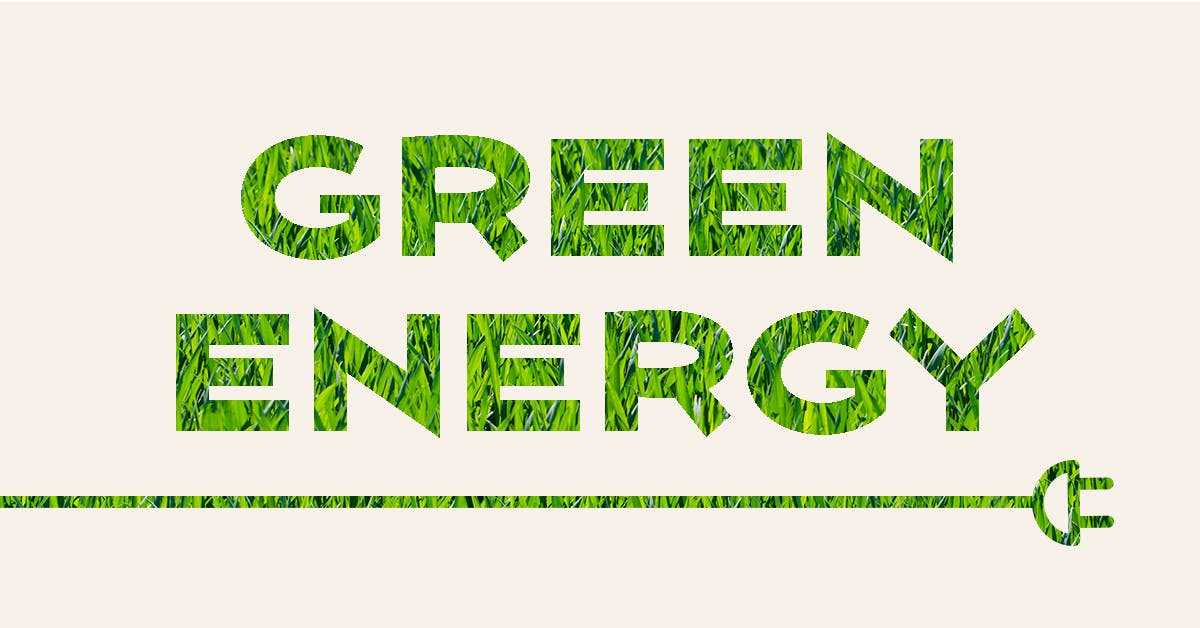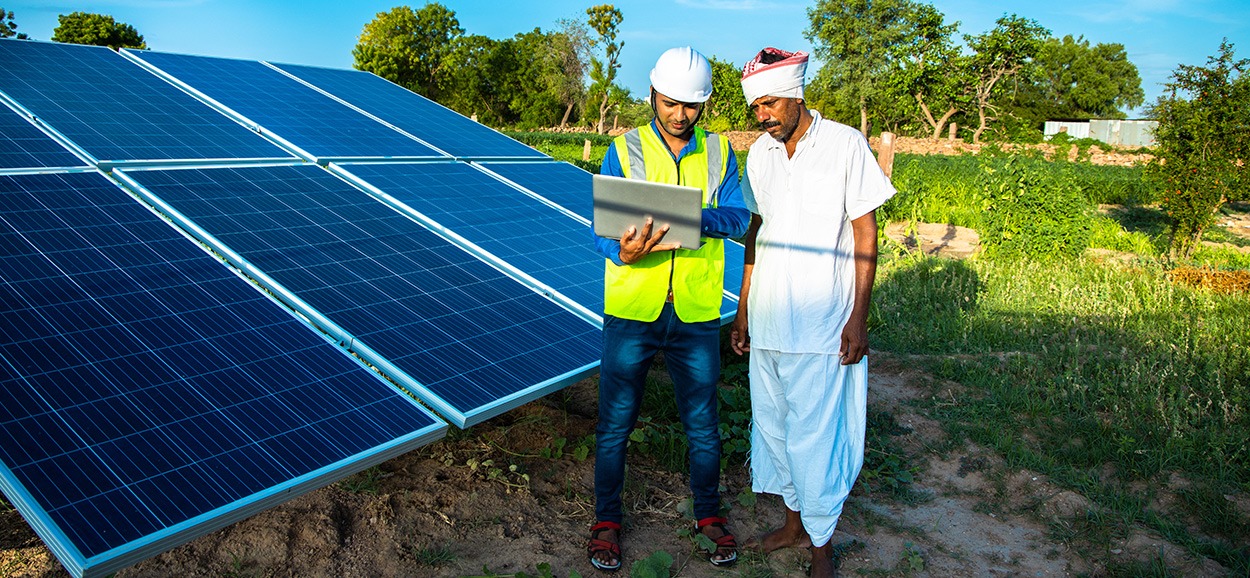Courtesy : inspirecleanenergy.com

What Makes Solar Energy Green


Don’t worry about climate change— do something about it.
Our clean energy plans are the easiest way to reduce your home’s carbon footprint.Switch to clean energy
As long as humans live on Earth, the sun will be shining. So from our standpoint, solar energy is effectively endless in its availability.
The sun delivers more total energy to the Earth every second than we use in a year. Additionally, solar power generates far less pollution than “dirty” power does when it is produced or consumed. By expanding solar power and decreasing reliance on fossil fuels, carbon emissions worldwide could be reduced significantly.
Because sunlight isn’t extracted from the land like fossil fuels, it also has less environmental impact. Fossil fuel extraction can cause significant problems. In 2010, BP’s deep sea oil drilling disaster released 3.19 million barrels of oil into the Gulf of Mexico1, harming marine ecosystems. Coal mining in Appalachia has defaced some of the Earth’s oldest mountains, as well as causing detrimental health effects in neighboring areas. In comparison, solar energy comes at very little environmental cost.
Is solar energy clean?
No energy source is entirely clean (yet!), but solar power is about as clean as it gets. Unlike fossil fuels, producing electricity from the sun’s rays releases no harmful substances. There are no carbon emissions and pollutants, nothing that harms the environment locally or globally when the sun’s power is harnessed for energy.
However, the photovoltaic panels that convert light to electricity have to be manufactured. This uses energy and raw materials, and some of the processes used produce harmful byproducts. A notable example of these byproducts is the silicon tetrachloride that results when polysilicon is made from metallurgical-grade silicon. If dumped, this will mix with water and produce hydrochloric acid acidifying the ground and emitting harmful gasses.
The technology is there to recycle and render harmless such waste, but not all manufacturers are prepared to invest in the costly equipment. Better laws, incentives and regulations can help eliminate this problem.
Of course, while this is the case, solar energy is still so much greener and clean than non-renewable energy sources. This makes it one of the best choices for clean, renewable energy. It’s also highly likely that we can make the process entirely green in the not-too-distant future.
What makes solar energy green?
Solar energy is regarded as green because it uses a natural resource that can’t run out and has almost no negative impact on the environment. The traditional energy sources of fossil fuels like coal, natural gas and crude oil, by comparison, produce massive amounts of carbon emissions and pollutants and contribute hugely to climate change, respiratory problems, and pollution.
Not only does fossil fuel extraction and power generation harm the planet, but these resources are dwindling fast and cannot be renewed. We need green energy, and solar energy is part of that solution.
Is solar actually green?
Solar power is becoming increasingly common. Part of the key to its popularity is its scalability. While solar farms are becoming prevalent globally, of equal importance are the millions of individual small arrays being installed on houses and commercial property.
While all power generation has a footprint, that of solar power is a very small one. Yes, there are addressable problems with manufacture, but once panels are commissioned, they need very little maintenance. There are also questions about the recycling of photovoltaic panels, but many of those are posed simply because the technology is new. As the industry expands, the interest in recycling old panels will rise.
Everything humankind does has consequences, but there are few negative effects from the increase in solar power. Again, it is worth repeating that coal, oil and natural gas are infinitely more damaging to the environment than solar power.
Solar Energy Has Economic Benefits
Along with its impressively low environmental costs, the solar power industry can also be economically beneficial.
Reliance on foreign fossil fuel supplies has caused global economic and political quandaries in the past, a problem that could be relieved by renewable energy. On a smaller scale, using solar panels at home can help reduce your electric bill significantly, along with decreasing your carbon footprint. They also add value to your property, making them a worthwhile investment.
As the world gradually moves to decrease humanity’s reliance on environmentally devastating fossil fuels, solar power provides an efficient and economical “green” solution. Even among renewable energy resources, solar power stands as one of the cleanest technologies available.
Is solar energy the future?
Yes – renewable energy is our only option for the future, and solar energy will play a key part in supplying the world with electricity. The world cannot carry on using the polluting and unsustainable fossil fuels it has relied on for generations. But no one source of energy can provide all the power an expanding population demands.
Solar power is part of the answer. Along with wind, water, geothermal and other clean energy sources, solar power can help transform the way we live. According to the International Energy Agency (IEA, solar PV is growing faster than other renewables, particularly by individuals and small-to-medium-sized enterprises. The Center for Climate and Energy Solutions (C2ES) estimates that electricity produced by solar power will rise to 48% of the renewable energy generation in the U.S. by 20503. The International Renewable Energy Agency (IRENA) stated that globally installed solar capacity reached over 700 gigawatts in 20204.
What are the downsides of solar energy?
The only thing stopping solar power from being the perfect energy source is the manufacture of photovoltaic panels and recycling of old ones. The main raw material for PVs is silicon, and while this is abundant, it requires a lot of energy to transform it into a solar panel. Often this energy comes from fossil fuels, particularly coal-fired power plants, so the carbon footprint of manufacture can be quite high.
But as the industry expands and matures, it is expected that the manufacturers will align themselves with the sustainable ideals that drive the move to green energy.
What are the two main disadvantages of solar energy?
The two main disadvantages of solar energy production are high initial cost and weather dependency.
The investment required for even a small project is high, and it will take years before a solar panel pays for itself, at least seven and often more. As the industry grows, however, costs will come down, and panels become more affordable. Also, running costs are minimal, with little in the way of a maintenance program needed.
Solar panels don’t currently work at night and inefficiently when there is cloud cover. That is inevitable and means an inconsistency of supply. On the other hand, they don’t rely on clear blue skies and bright sunshine to function, though that is when they will generate the most power. Using multiple renewable energy sources goes a long way to resolve this problem, but advances in electricity storage are also helping.
Storage is the long-term answer, and, as we have already seen, battery technology is moving forwards all the time. Recently, the auto industry has embraced the electrification of transportation, which has driven an advance in the ways that batteries are designed and used. Moving forward, it is easy to see that power storage solutions will boost the adoption of renewable energy sources.
Do solar panels last forever?
At the moment, solar panel manufacturers guarantee their panels for around 25 years, but many expect the current generation of PVs to still have 75% efficiency long past that. It is rare for a panel to fail or develop a fault before that time, though there is usually a very slow output degradation.
The industry is constantly evolving, with panels becoming better at turning light into power, so it may be that it becomes economically advisable to renew panels before they develop problems or become too inefficient.
How long does it take for solar panels to pay for themselves?
The average cost of a domestic solar panel installation is thought to be around $17,000, and at current rates, you may not recoup this cost for seven to 15 years, occasionally even longer. With the tax breaks and incentives offered in some states, this initial outlay may well be much lower, perhaps as little as $5,000, so payback time will be considerably shorter. Average savings after that are substantial, basically free electricity from that point on. Remember that solar panels can add value to your home and make it easier to sell.
Are solar panels worth it this year?
There aren’t many things that you buy that don’t devalue. The car you pay $40,000 for is worth significantly less as soon as you drive it off the lot. Solar panels are, currently, an exception if you own your own home and want to improve the value.
If you have the cash and a suitable site, buying solar panels for your home is a wise move. Once the installation costs are met, solar panels require very little looking after, and you are free from worries about increased power costs. Should you decide to sell your home, then PVs on the roof work in your favor.
However, if you don’t have a suitable site or live in an area that experiences a lot of overcast weather, it’s not yet worth it. In the future, solar panels will be able to work night and day in many conditions, but they aren’t currently effective enough to warrant us all trying to find somewhere to put a solar panel or two. Instead, you can make the switch to a renewable energy company.
Energy companies (like Inspire) are making it easier to switch to renewable energy, no matter where you live. If you live in the US, chances are you can access 100% clean, renewable energy by signing up for Inspire. Inspire members have helped drastically reduced their carbon footprint by switching their energy to us, and you can do the same. To find out if we can do the same for you, click here.
In 100 years, people will look back and wonder why we didn’t switch to renewable energy sources sooner; it will seem like a no-brainer. We might have been a little slow in realizing the damage that fossil fuels cause and the fragility of supply, but that’s changing fast.
Solar power is a big part of that change and uniquely adaptable to small-scale use. We can’t all have a wind turbine or hydroelectric project in the backyard, but millions of us have unused roof space we can turn to our advantage. Adding solar panels to your home gives you power independence and helps build a better planet. A real win-win situation.
Sources:
We’re on a mission to transform the way people access clean energy and accelerate a net-zero carbon future.Learn more about Inspire →
RECENT POSTSInspire Clean Energy and GivePower Help Nepali Village Harness Solar Power Sparking Change at Climate Week NYC’s Nest Summit CampusInspire Impact: Bringing clean energy to remote parts of the world with our partners at GivePowerHow Much Does It Cost To Run A Space Heater?Does Renewable Energy Cause Pollution?Reliable Energy SourcesEnergy Efficiency and Renewable EnergyWhat is Sustainability?How Renewable Energy Jobs will Power the FutureWhat Is Carbon Offset←•••••••→
TOP ARTICLESWhat’s the Average Gas Bill in my State?What Uses the Most Electricity in a House?Average Apartment Electric BillHow to Calculate kWh (Kilowatt-Hours)Average Cost of Utilities for a HouseTypes of Alternative Energy Sources You Can Use TodayEnvironmental Sustainability Definition & ExamplesHow Much Energy Does A Wind Turbine Produce?Difference Between Renewable and Nonrenewable EnergyThe Advantages & Disadvantages of Fossil Fuel
OUR MISSION
We’re here to transform consumer access to clean energy and accelerate a net-zero carbon future.
Learn
Our Clean Energy →
Our Clean Natural G
Contact
Get the latest climate news and insights from Inspire direct to your inbox.
Submit
© 2022 Inspire. All rights reserved.
Terms of usePrivacy notice
*Offer valid for new residential customers in an eligible service territory who enroll before 11/30/22. This offer cannot be combined with any other offers. There are no sign-up fees, deposits, credit checks, or cancellation fees for Inspire’s service, and you may cancel at any time. Inspire does not guarantee any savings relative to basic supply service offered by your local utility company and choosing a supplier is not mandatory. Prices shown are for the supply/generation portion of your electricity bill only and are not regulated by state utility commissions. Taxes may apply. Your utility company will continue to deliver your electricity, respond to any emergencies, and send a consolidated bill that includes both Inspire’s supply/generation charges and any utility delivery/distribution charges or fees, which are separate amounts you will have to pay to your utility company. Inspire ensures that 100% of your electricity consumption is sourced from renewable energy generation facilities or otherwise paired with Renewable Energy Certificates (“RECs”) from renewable generation facilities like wind, solar, or low-impact hydro located in the U.S. You will receive a reimbursement for up to $100 within 60 days of the end of the billing cycle that includes your third full month of service with Inspire. Terms and conditions apply. Please click here for complete details. Inspire Energy Holdings, LLC, P.O. Box 60167, Philadelphia, PA 19102, is licensed as an electric supplier and is not affiliated with your local utility company.
We use cookies to personalize and enhance your experience on our site and improve the delivery of ads to you. Visit our Cookie Policy to learn more. By clicking “Accept”, you agree to our use of cookies.Accept Customize





